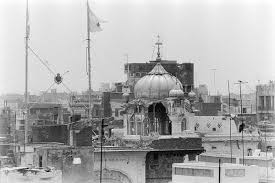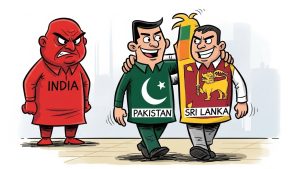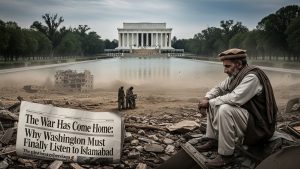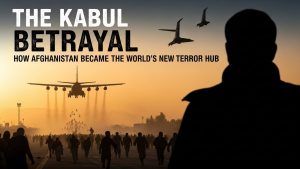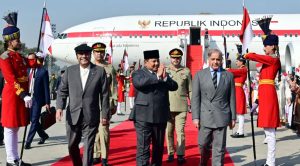More than four decades have passed since June 1984, but for the Sikh community, the turning of the calendar offers no real distance from the pain. History is not just a collection of dates; it is a landscape of shadows, and the shadow cast by that year is long and cold. The events of 1984 are not a distant chapter in a textbook; they are a living, unreconciled wound on the body of a people and a question that continues to haunt the Indian state.
The official story is one of stern necessity. Operation Blue Star, we are told, was a required military action to remove armed militants from the Harmandir Sahib complex, Sikhism’s most sacred ground. But for those whose faith is anchored to that hallowed space, this clinical explanation is an insult to an unforgettable desecration. It was Guru Arjan Dev’s martyrdom day, a time when the complex was filled not just with militants, but with hundreds of innocent pilgrims—families who had come to pray, not to die. They remember the thunder of tanks, the sacrilege of army boots on pristine marble, and a storm of bullets that made no distinction between militant and devotee. This was not a tactical operation; it was an assault on the very soul of a people, a spiritual violation from which recovery has been a long and painful road.
The horror, however, was just beginning. The assassination of Prime Minister Indira Gandhi by her Sikh bodyguards in October unleashed a storm of retribution that felt less like spontaneous rage and more like a state-sanctioned hunting season. Across Delhi and other cities, anti-Sikh violence erupted. For three terrifying days, mobs armed with iron rods, kerosene, and voter lists to pinpoint Sikh homes, went on a rampage of unimaginable cruelty. They burned men alive, assaulted women, and butchered children, all while the police force that had sworn to protect every citizen either looked on or actively participated. Thousands vanished into the chaos, their fates never known. Today, the chasm between the government’s low-balled death toll and the stories told on the streets remains a stark testament to a justice that has never fully arrived, leaving a scar of profound betrayal on the survivors.
Forty-one years later, the echoes of 1984 are unmistakable. They resonate in the deep and abiding distrust that greets any form of Sikh assertion. When farmers, many of them Sikh, protest peacefully for their livelihoods, the old labels of “anti-national” and “extremist” are swiftly dragged out of the state’s playbook. Sikh advocacy groups, many forged in the fires of 1984, are viewed with suspicion. This environment of perpetual scrutiny is the fertile soil in which the call for ‘Khalistan,’ a sovereign Sikh state, continues to find root. For those who champion it, the call is not just a political slogan; it is an expression of deep-seated fear—a belief that their identity, faith, and physical safety will never be truly secure within the Indian union. When Sikh activists and journalists die under mysterious circumstances abroad, casting a chilling global shadow, and the state’s response is deflection rather than transparent investigation, that fear is only amplified.
This forces a difficult, piercing question: When a people’s pain is consistently treated as a political threat, is the goal to heal the nation or to erase a truth that makes it uncomfortable? The real legacy of 1984 isn’t etched in the stone of the temple walls, but in the hearts of a community. It is a shared ache, an intergenerational trauma passed down in hushed stories and learned caution. It is a wound that parents pray their children won’t have to carry, yet it becomes their inheritance. It is a deep human yearning not just for an apology, but for acknowledgment—for their suffering to be seen and their story to be validated before any real mending can begin.
A forced silence is not peace. It is a fragile truce with the past, the quiet sound of a wound left to fester. History has taught us that such wounds, if ignored, do not simply heal on their own. They have a way of breaking open again, more painful and more poisonous than before. Real healing demands courage—the courage to face the ugliest truths head-on. It requires listening to the stories that are hard to hear, and acknowledging the pain that is hard to witness. Only then can the ghosts of 1984 finally be laid to rest, and a future free from their haunting shadow finally begin.

